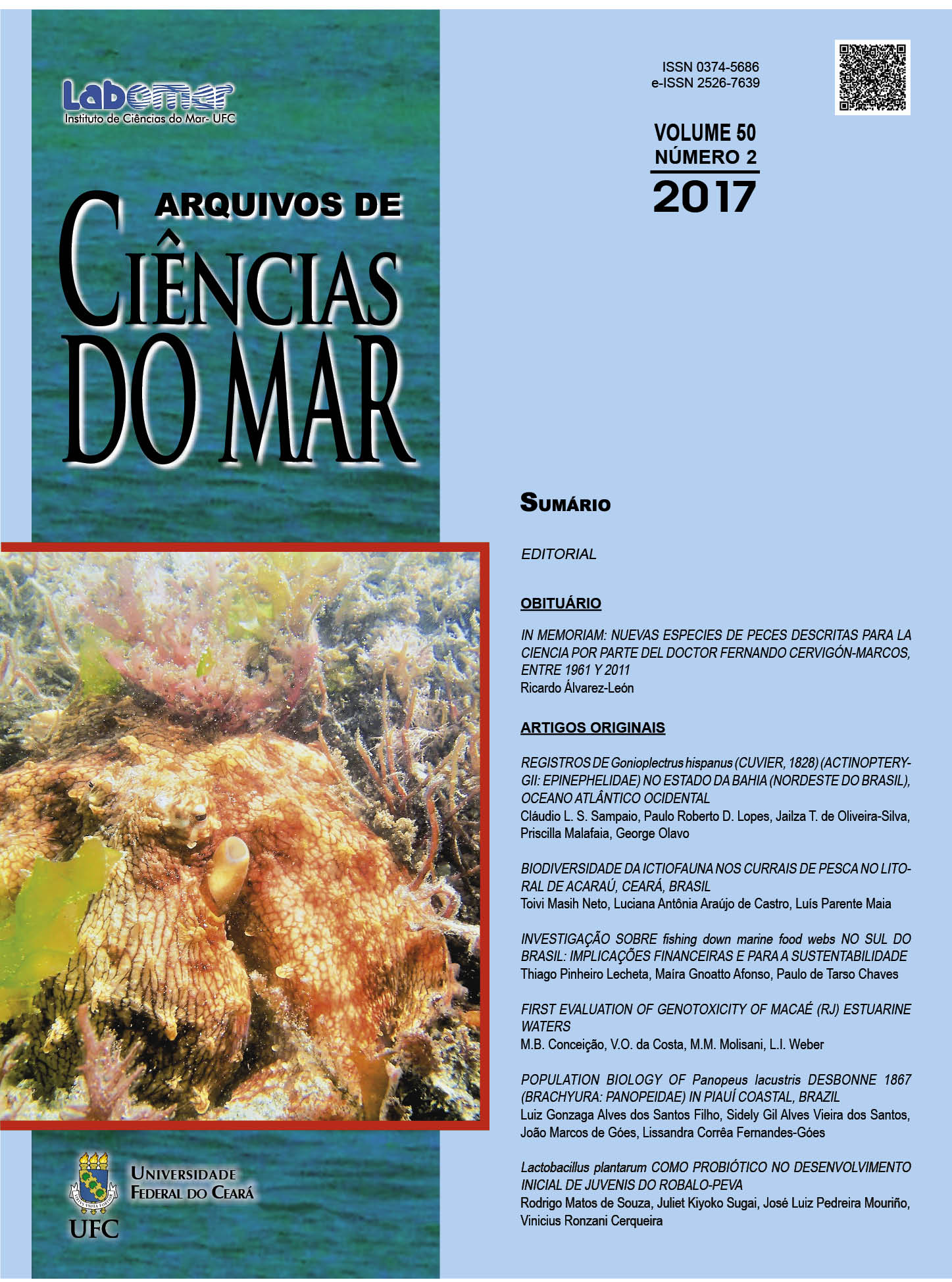Ichthyofauna biodiversity in fish-weir in Acaraú Coast, Ceará State, Brazil
DOI:
https://doi.org/10.32360/acmar.v50i2.31143Keywords:
Artisanal fishing, fishing gear, live fishes, marine fish, public aquarium.Abstract
This research aimed to characterize the ichthyofauna captured by the fish-weirs corrals in the Coconut Island Beach, Acaraú, Ceará State, Brazil, to verify the diversity, richness, equability and abundance of the species, in order to know the potentiality of this fishing gear to obtain live fish for demonstrative use and environmental education in public aquariums. Twenty-six collections were carried out between October 2013 and October 2014. A total of 1449 fish caught in fish-weir were recorded and identified. The data were used to calculate the diversity indexes of Shannon-Weaver, Simpson, Berger-Parker, Pielou equability and Margalef wealth. From the identification of the species was evaluated the potentiality to obtain fish for use in public aquariums. Two classes, 10 orders, 34 families and 60 species were captured. The families with the greatest diversity were: Carangidae, Haemulidae and Lutjanidae. The most frequent species in descending order were: Haemulon plumierii, Carangoides bartholomaei, Hyporhamphus unifasciatus, Trichiurus lepturus and Diapterus auratus. All indices showed high biodiversity of fish caught in the studied fish-weirs. Several captured species are reported as used in public aquariums, so this fishing gear can be used to obtain fish for this purpose.
Downloads
Published
Issue
Section
License
1. Proposta de Política para Periódicos de Acesso Livre
Autores que publicam nesta revista concordam com os seguintes termos:
- Autores mantém os direitos autorais e concedem à revista o direito de primeira publicação, com o trabalho simultaneamente licenciado sob a Licença Creative Commons Attribution que permite o compartilhamento do trabalho com reconhecimento da autoria e publicação inicial nesta revista.
- Autores têm autorização para assumir contratos adicionais separadamente, para distribuição não-exclusiva da versão do trabalho publicada nesta revista (ex.: publicar em repositório institucional ou como capítulo de livro), com reconhecimento de autoria e publicação inicial nesta revista.
- Autores têm permissão e são estimulados a publicar e distribuir seu trabalho online (ex.: em repositórios institucionais ou na sua página pessoal) a qualquer ponto antes ou durante o processo editorial, já que isso pode gerar alterações produtivas, bem como aumentar o impacto e a citação do trabalho publicado (Veja O Efeito do Acesso Livre).

